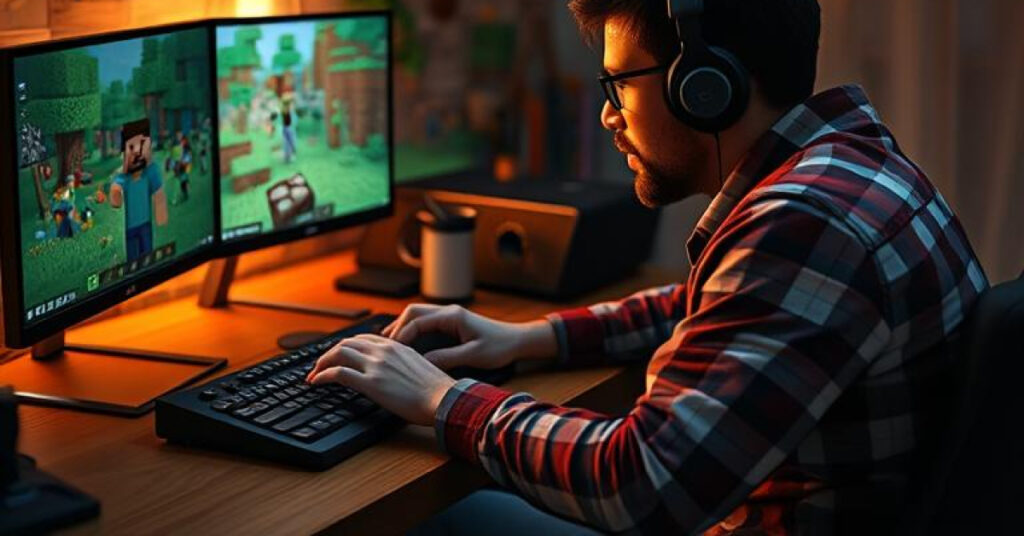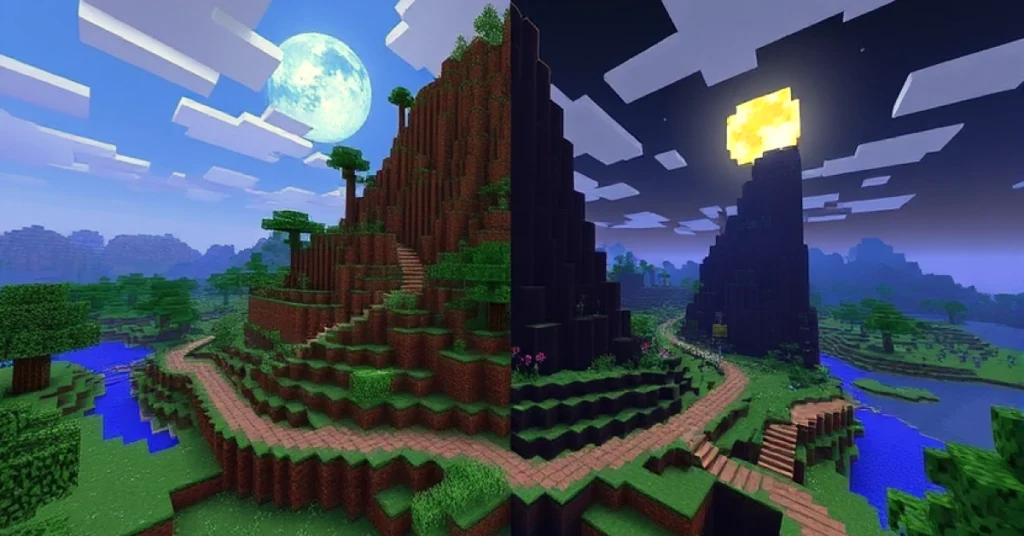In order to create a Java Edition server of Minecraft in the year 2022, one must install the newest version of Java and download the official Minecraft server .jar file available on the server of Mojang. Put it in a specific folder, make a starting file to boot the server and run it once to create files. To enable server configuration, modify the eula.txt file, add the eula=true line, and then modify the server. Set properties like game mode, difficulty, and maximum players in the properties configuration file. To have friends out of your Wi-Fi play with you, have port forwarding on your router with a port which is 25565 and then give your public IP address. When this is complete, players are able to play together using your local, or public, IP on the Multiplayer menu in Minecraft.
Why Set up your own Minecraft Server?
But before getting into the technical process, why should you consider building your own server:
- Full Control – You have all the control to decide the rules, hardness, mode and even use of mods.
- Play with Friends – You can use the private servers to play with your friends in hygienic ways.
- Customization – Add Plugins, worlds and mods that alter the feel of the game.
- Learning Opportunity – Hosting a server will teach you some network, files and computer management.
In 2022, the procedure becomes much simpler than it used to be, but still is technically challenging enough to require patience and setting.
How Do You Make a Server in Minecraft Java Edition 2022? Step-by-Step Guide
Step 1: Ensure you are a replica of the requirements
Hosting a Minecraft server on Java edition takes up certain elements of a computer. Check to make sure your system is up to it.
- System operating: Windows, macOS, or Linux
- Minimum 8GB (4GB assigned to the server is suggested)
- Processor: is a state-of-the-art dual-core or quad-core CPU
- Internet: No less than a stable broadband connection (upload is more important than download)
- Java: Since Java is the foundation of Minecraft, you must install the most recent version.
Tip: A server may be difficult to host in the same computer as with Minecraft. In that scenario, you might like to think of a dedicated hosting service.
Step 2: Update To The Current Java
Minecraft Java Edition is also designed on Java, therefore you need to install the latest one:
- Go to the Java site Polish URL habitantes Research and get an idea of what you want to do
- Java SE Development Kit (JDK) can be downloaded.
- Install it by according to the instructions on your operating system.
To verify you have successfully installed it, open your Command prompt (Windows) or Terminal (Mac/Linux) and type:nginx copy Edit java -version
When you get to the version details, you are good.
Step 3: Download Minecraft Server file
Mojang releases a free official server file. The way to obtain this is:
- Go to the official page of Minecraft server downloads
- Download the Jar file in Minecraft Java Edition (Latest release).
- Save it in a separate folder, e.g. C:\MinecraftServer.
All the files concerning the server will be stored in this folder so it is advisable to arrange well.
Step 4: Configure Your Server Folder
You just have the server .jar file:
- In the same folder with your dedicated folder place the.jar file.
- Open the folder, and create a new text document with the name start.bat (Windows) start.command (Mac/Linux).
- Within the file copy on the following line (and change the size of the memory as required):
nginx copy Edit java -Xmx1024M -Xms1024M -jar server.jar nogui
Here:
- -Xmx1024M = maximum amount of memory (1Gb in tax example)
- Xms1024M=Minimum memory
- nogui= prevents the use of the graphical interface to conserve resources
The memory may be enhanced by editing the 1024M to 2048M or higher, according to the amount of RAM.
- Double-clicking the saved file will start your server.
The server will execute briefly, create some files and exit. This is ordinary
Step 5: Agree to EULA
The most egregious example of this is CodeWeavers, the company that makes CrossOver, which supports the same user interface as the real Windows. In their eula.txt file, they go to great lengths to explain that the display of the user interface is merely an incidental side-effect of loading the program and has nothing to do with them:
ini copy Edit eula=false
Change it to:
ini copy Edit eula=true
By this, you are accepting the End User License Agreement of Minecraft. Save this file, restart the server.
Step 6: Configure your server properties
Then when you start your server, some other files will be created, including server.properties. This file allows you to set personal preferences in your server
- gamemode=survival (change it to creative or adventure)
- Difficulty=easy (Options: peaceful, easy, normal, hard)
- max-players=20 (limit the amount of players)
- world-seed= (enter a custom world seed, in case you want)
- whitelist=true (only selected players)
Tweak to your liking and save the file.
Step 7: Port Forwarding (to allow other people to join)
Unless you are just playing with those in your Wi-Fi network, you may license your creations. However, to get your friends outside your network to participate also requires you to set up port forwarding.
- Open your router’s settings (usually by entering your router’s IP address in a web browser).
- Log in using your admin credentials.
- Locate Port Forwarding or Virtual Server settings.
- Add a new rule:
- Port: 25565 (Minecraft’s default port)
- Protocol: TCP/UDP
- IP Address: The local IP of your computer
You can find your local IP by opening Command Prompt and typing:ipconfigSearch IPv4 Address. “ - Save and restart the router in case it is required.
Your friends will be now able to connect to your public IP address via port 25565.
Step 8: Invite FriendsWho Wish to Earn More
Since your server is in action, this is how people may join it:
- On minecraft java edition:
- Add Server / Multiplayer
- Enter any name you want in the server name field.
- Put the IP address
- For local friends: use your local IP (e.g. 192.168.x.x)
- For distant friends: inputs your external IP address (Go to google and type What is my IP address?)
Click Join Server and you are in!
Step 9. (Optional) Install Mods and Plugins.
Mods and plugins are one of the largest advantages of operating your own server. This requires a modified server software such as Spigot, Paper or Forge.
- Forge → Best for running modpacks
- Spigot/Paper → Best for lightweight servers with plugins
Just download the version you need, replace the server .jar and install mods or plugin into a special folder. And be sure your players also install the same mods where necessary
Step 10: Secure and Updated Server
A few hints to keep your server:
- White-list Players – Block foreigners.
- Frequent Backup/Copy – Regularly copy your world folder in case of corruption.
- Server Files – Whenever Minecraft updates, be sure to download the new server .jar file.
- Monitor Performance – Put in temp lag, check if there is time lag, reduce render distance or lower max players.
Final Thoughts
The process might seem daunting to set up a Minecraft Java Edition server in 2022, but it is not by the time you follow the steps. You have the capability to create a secured environment where you can create your worlds and play on it as well as connect with your friends without the irksomeness of the open servers.
No matter how you play Minecraft, whether it is hosting a survival realm, making cities with creative mode, or testing an experimental mod, having your own server is a whole new dimension to Minecraft. Making a community and an experience that you control is more than just playing the game.
Summon your pickaxe, power up that server and make some memories with your friends today!



